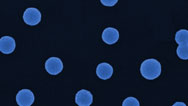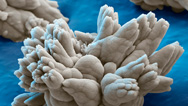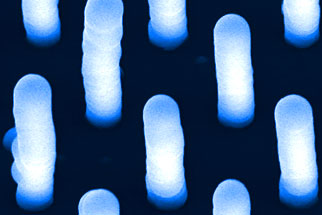Cancer Nanotech
- By Lexi Krock
- Posted 04.01.05
- NOVA scienceNOW
Think small—really small. Some nanotechnology devices are as small as one nanometer, or 1/80,000th the width of a human hair. At these sizes, it is no wonder that scientists have seized upon nanotechnology for its potential in medical applications. In the not-too-distant future, as this slide show reveals, dozens of nanodevices may transform cancer diagnosis, treatment, and prevention.
Credits
Images
- (introduction)
- Courtesy of R. Nesper, Laboratory of Inorganic Chemistry, ETH Zurich
- (nanotubes)
- Courtesy of Tim McKnight, Anatoli Melechko, and Michael Simpson, Oak Ridge National Laboratory
- (nanowire)
- Courtesy of Eric Mazur, Harvard University
- (nanocantilever)
- Courtesy of M.E. Welland, Nanoscience Centre, University of Cambridge
- (nanoshells)
- Courtesy of Naomi Halas, Rice University
- (quantum dots)
- Courtesy of Jeff Harbold, Cornell University
- (nanopores)
- Courtesy of Robert M. Metzger, University of Alabama
- (gold nanoparticles)
- Courtesy of Chad Mirkin, Northwestern University
- (liposomes)
- Courtesy of the Cryomicroscopy Group
- (fullerenes)
- Courtesy of J.C.W. Bax, Metafysica
- (dendrimer)
- Courtesy of Laboratoire des IMRCP
Related Links
-

Naomi Halas is a pioneering nanotechnologist bent on seeing practical applications for her work—and soon.
-

In this interview, nanotechnologist Naomi Halas talks in depth about her work with tiny spheres that hold great promise.
-

Rice University's Naomi Halas answers questions about her nanotechnology work and her career in science.
-

Hollow nanoparticles loaded with cancer-fighting drugs destroy tumors while avoiding healthy cells.
Close
You need the Flash Player plug-in to view this content.








